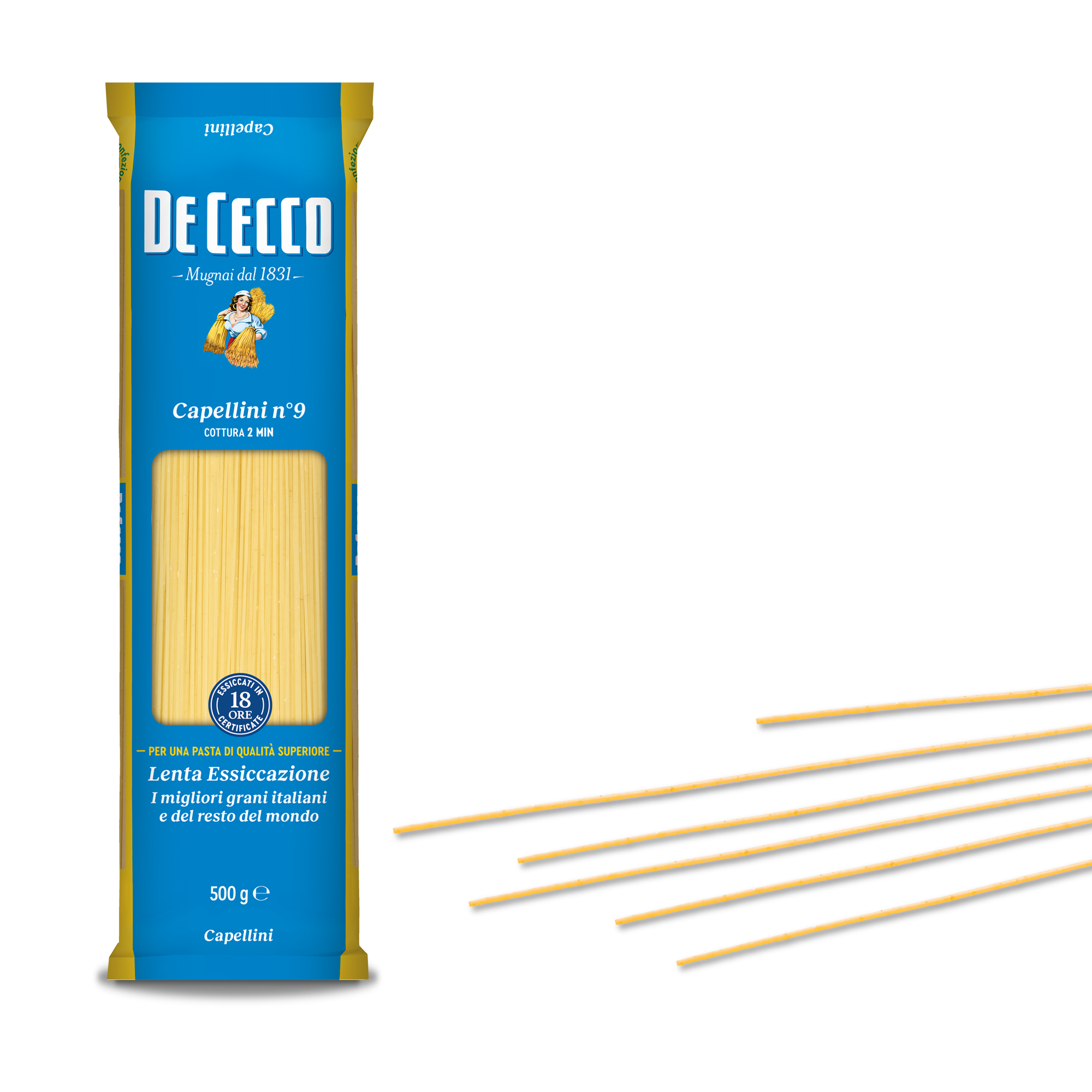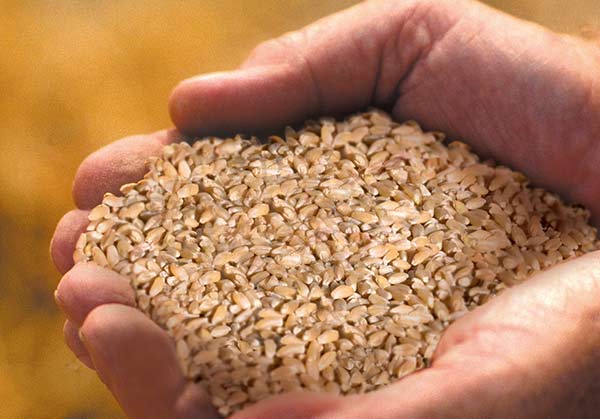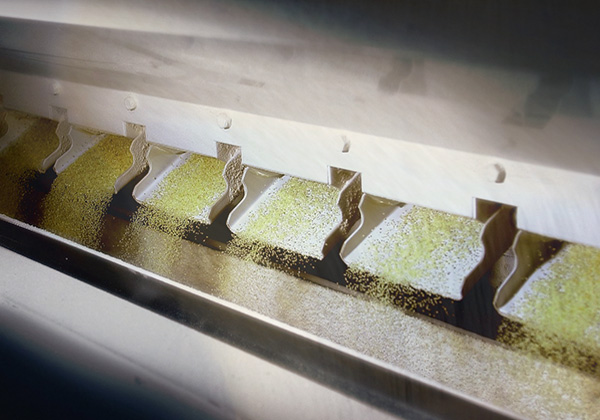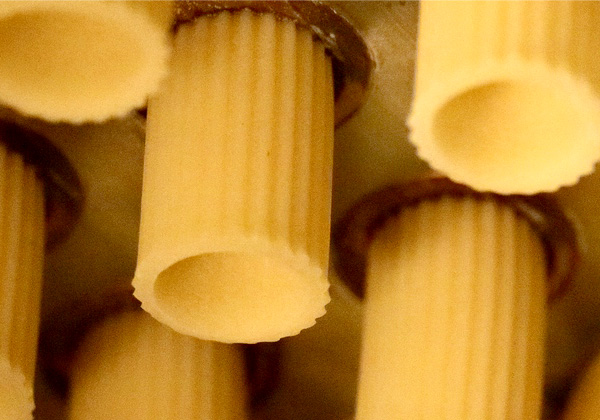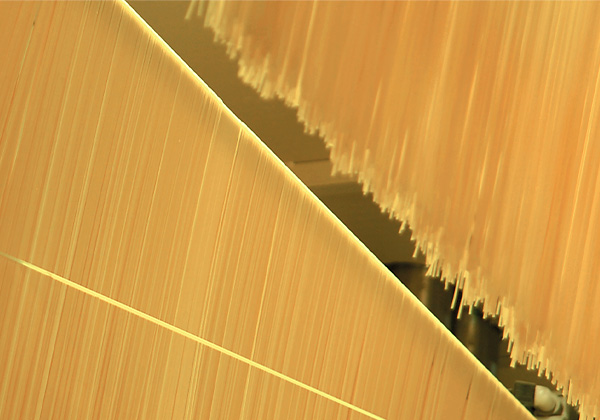Fusilli n° 34
Fusilli come from Campania and belong to the short, straight cut family of pasta.
In the past, Fusilli were made by hand according to a method that was passed down from one generation to the next. You had to rapidly twist a strand of spaghetti around a knitting needle with a skilled hand. The ability required to perform this procedure is reminiscent of that of spinners and as a matter of fact, the term "fusillo" comes from "fuso" (spindle) which was the tool used by spinners.
This pasta is particularly good with meat and fish based sauces or with condiments made with ricotta. It is also perfect with vegetable sauces too that are prepared with a tomato sauce with peppers, aubergines, olives and capers.
Available in 500g or 3 Kg packs.
- Cooking time: 11 min - Al dente: 9 min
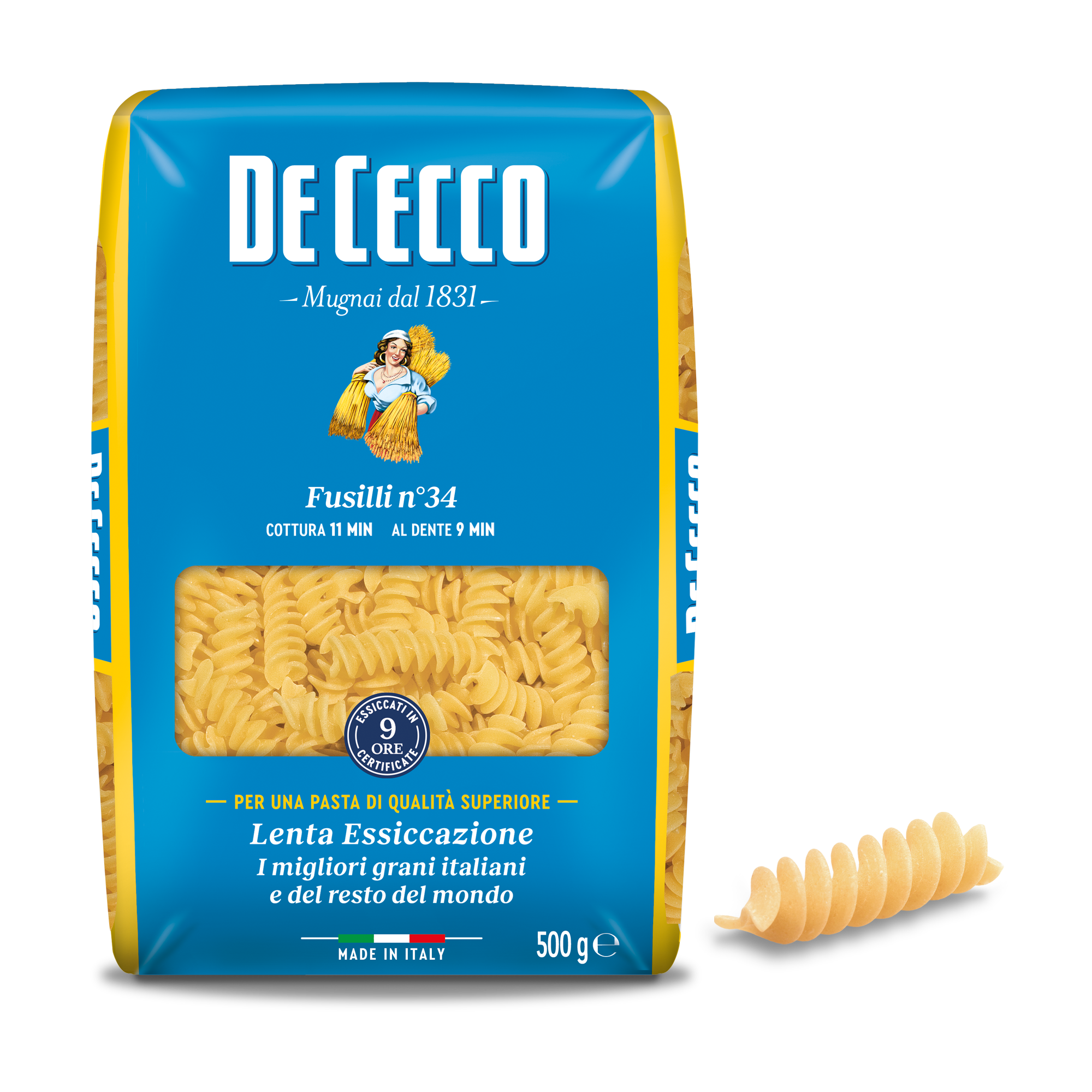
Our method
Capellini n° 9
The origins of Capellini, with their evocative name (fine hair) and light consistency, are contested between the area around Genoa, Naples and the Ciociaria (central Italy). It is one of the thinnest types of long pasta wound into a nest shape.
Even the name Capellini is reminiscent of the fine consistency of this type of pasta which is ideal for infants from 9 months old onwards to help them get used to eating food for grown-ups.
Simple condiments are recommended for this type of pasta. It is excellent combined with butter dressings, such as uncooked butter and cheese, or melted butter with sage and cheese. Egg or fresh raw tomato based sauces are also excellent. Another way to enjoy Capellini is in a light, chicken broth. In addition to broths and pasta dishes with sauces, this pasta is also used to prepare oven-baked dishes in the Naples region.
Available in 500g packs.
